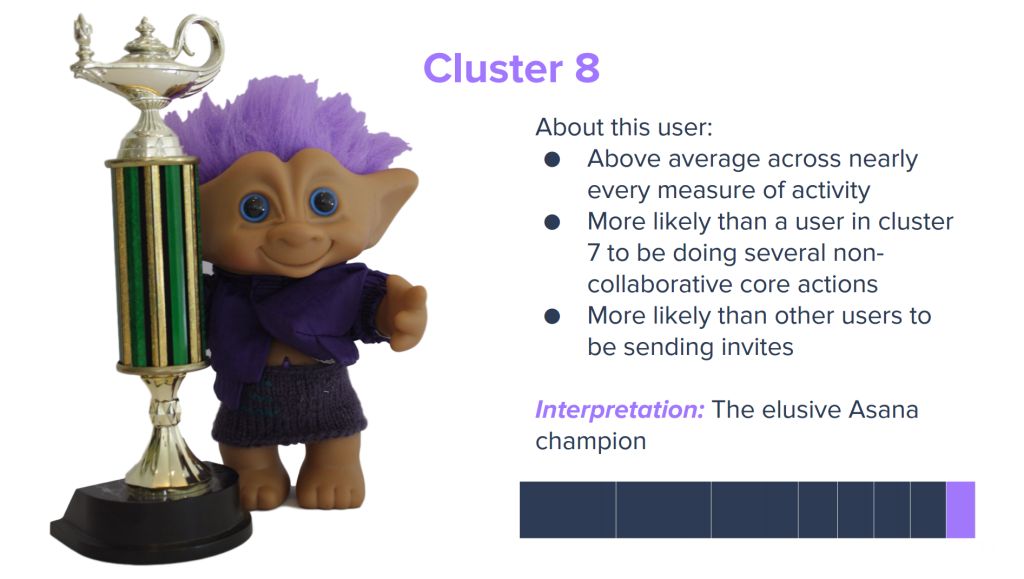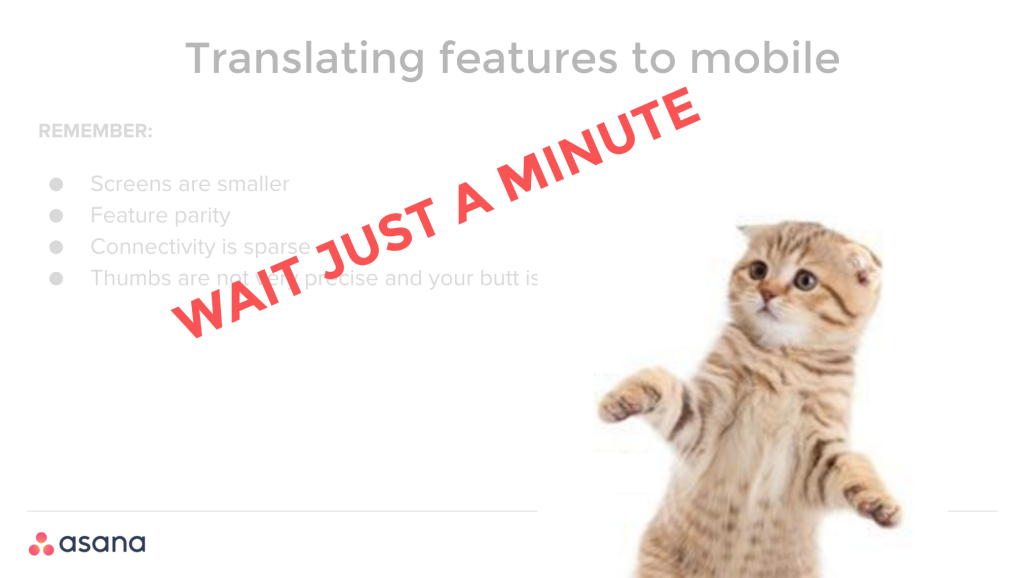Field notes from last week’s Together in Tech: Women event
Last week, we hosted our first-ever Together in tech event, and the focus was on women doing product-oriented work at Asana. The goal of the event is to bring together folks in technical roles, discuss broader challenges faced by teams at Asana, and share learnings. It was a remarkable event! If you weren’t able to make it, we have put together summary of key takeaways from the three presentations given.
Enterprise growth strategies
Rachel Miller and Theresa Lee, Product Engineers
Enterprise growth is significantly different from more traditional social growth. Here are some questions to consider when establishing a growth strategy.
- Where are decisions being made? Lots of key decisions are being made outside of the app, so mechanisms like invitations don’t matter as much for enterprise apps.
- What about usability? Many of the biggest changes in how people use Asana have come from us improving usability of the app—by fixing problems we knew about intuitively or were suggested by user research. Given our business model, this makes sense: people share Asana when they think it’ll be a valuable tool for their co-workers.
- What’s the difference between free and paid? Most of our new customers purchase from within the app, which makes it extra important that our product clearly establishes what is a paid feature and what isn’t. Users need to understand what they’re getting for free vs. what they could be paying for to drive purchases.
Creating meaningful user clusters
Erin Akinci, Data Scientist
Understanding your users is the first step in learning how to to improve your product. Creating meaningful user clusters is the best way to leverage your users’ data to do so.
- See the whole picture: It’s important to understand segments of your users that represent a broad spectrum of user behavior, not just those who are most active or who most resemble the people building the product.
- How to group users: K-means clustering is one way to find groups of users based on patterns in their behavior.
- Tell stories: Creating stories around the patterns in each cluster makes it easier to relate to and remember the different groups of users.

Telling stories can help you relate.
Working cross-platform on a launch
Jennifer Nan and Sarah Chandler, Product Managers
When users use a product on different platforms, they don’t differentiate between each version of the app. From a product perspective, when building across platforms, the goal must be a seamless, familiar, powerful, and optimized experience for the user, wherever they are. Some key takeaways from our launch of Team Conversations on web, iOS, and Android:
- User feedback can’t always give you strategic answers.
- Treat features that are core to your product like part of your DNA (even when it’s hard).
- Users don’t think of your mobile experience as separate, and you shouldn’t either.
- Think about the scenarios rather than the platform.

Interested in attending a future event at Asana? Follow us on Twitter or like our Facebook page for upcoming event announcements. If you’re interested in the work our teams do, have a look at our jobs.
